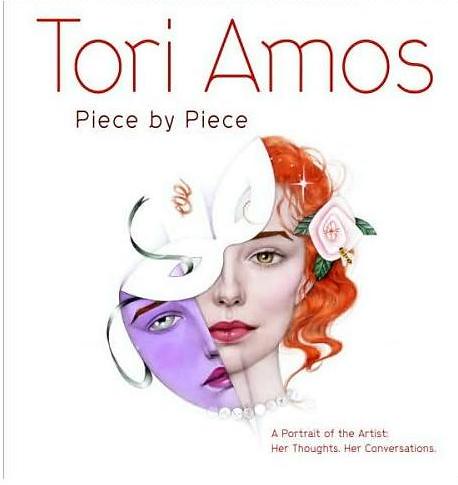Reader Christopher reminded us that we used to do book pieces all the time and note the importance of libraries. "Seems like that's needed now more than ever," he wrote. We agree. So this feature kicks off ten books of the last ten years you shouldn't miss.

If your public library doesn't have the book in their collection, remember most libraries are partners in Interlibrary Loan programs which allow them to pull a book from another library's collection. So if a book interests you but isn't in your public library's collection, speak with the front desk or a reference librarian to determine if a special request can be made for it.
In 1992, Tori Amos took the music scene to another level with Little Earthquakes. Last week, she released her latest album, Night of Hunters (Kat reviews it here). Along the way, she's blazed a trail that few can follow. As we observed when picking her American Doll Posse tour at the tour of 2007:
While the bulk of those still around who achieved fame or semi-fame during the period known as "alternative rock" suffer through one identiy crisis after another (should I be a solo? part of a super group?) as they attempt to chase down whatever might hand them a hit, Tori Amos has repeatedly stood up for art.
And that dedication raises interest in the artist's story. Fortunately, Tori Amos and co-author (rock critic for NPR and The Los Angeles Times) Ann Power produce a book that meets the stakes and raises them with Piece by Piece.

Excerpt:
Each album I've made represents a period in my vocal development. In Earthquakes, if you listen to the singing, there is a consistency, mainly because I was continually having to find my inner voice. Venus is very consistent -- to me, there's a real beauty throughout the album with the vocal. By then I could move into anger and out of it instead of experiencing it as an uncontainable emotion. On Pele I'm almost, you know, burning up. Whereas now, if I wanted to represent a woman in flames, I would detach myself, study it, make the needed shifts, and move the hands on my clock so that I could step into anger without being burned up. Pele is really where I think the voice unleashed. And sometimes in a way that wasn't contained. Once I found it, I could move on to temperance. At different times, you write different music for your voice and for you as a player, but you also write music that you can emotionally contain. Your soul -- your psyche -- what makes your inner world a wasteland or fertile or both, is the deciding factor in what will make up your song garden. With Choirgirl, after the Pele thing. I wasn't in a bloodletting place. I had lived that. There's a lot more containment -- I was tracking with musicians who were really skilled, and I needed to be spot on. With Pele I was also in a church, so you can imagine what was going on there -- talk about an exorcism, praise Jesus. It was about time. This girl was finding here Kundalini and letting it come forth right at the alter of the church where they would have their sacred communion. I was able to have sacred communion, finally, with the Feminine in the place where she had been circumcised. That's one reason for the haunting background vocal in "Caught a Light Sneeze," "Inanna Inanna Inanna bring your sons"; it was such a resurrection for she who is Mrs. God, right there in the church. With Choirgirl, and later with Venus, I was home. There was time to let the wife, the lover, the friend, catch up with the part of my woman who was living in these song realms. If your human woman doesn't catch up with what's happening in the song world, then you can't imprint this knowledge and thread it into your living tapestry.
From touring to motherhood, from spirituality to having to get two negative crew members in line, from creation to production, it's all here.